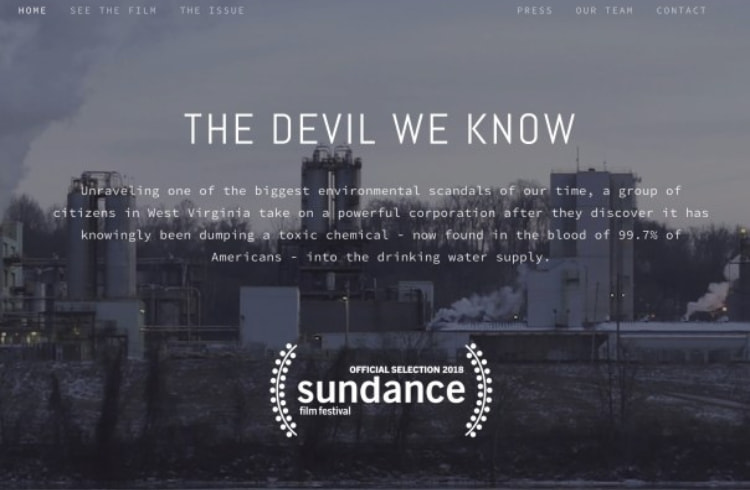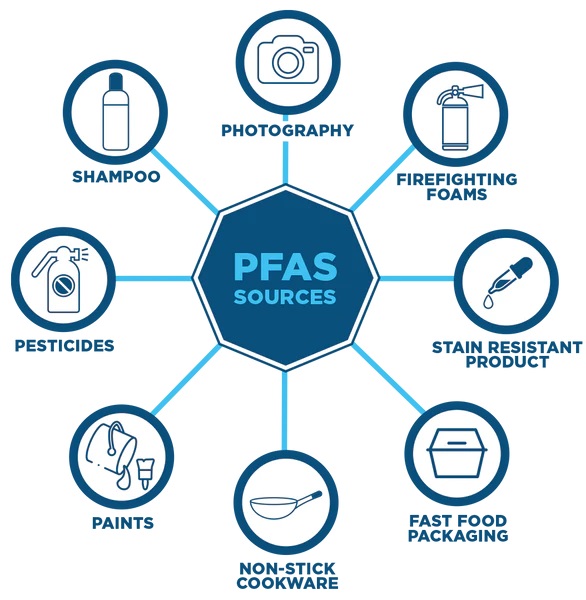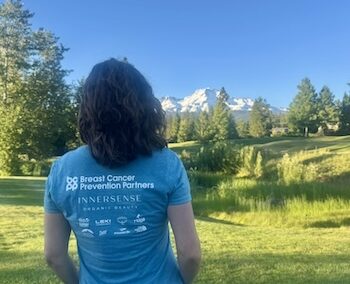
Welcome to our new series: Ask a Scientist
With BCPP Science Team Dr. Rainbow Rubin, PhD, MPH, and Pujeeta Chowdhary, MPH
You ask. We have answers.
The environmental links to breast cancer are complex. Yet, we all shouldn’t have to be scientists to better understand the risks we face when it comes to this disease. At BCPP, our scientists are your scientists, too. We want to help answer your pressing questions and concerns.
Starting this month, we’ll offer insights from BCPP’s new leading science experts: Dr. Rainbow Rubin, PhD, MPH, and Pujeeta Chowdhary, MPH.
Coming to you first is the topic our community asks us about most: PFAS.
What are PFAS chemicals (aka Forever Chemicals)?
Have you ever wondered how nonstick pans or waterproof coatings work? The answer is PFAS. PFAS stands for per-and polyfluoroalkyl substances. PFAS chemicals are useful because their strong carbon-fluorine bond—one of the strongest in chemistry—helps resist water and grease. There are approximately 12,000 PFAS chemicals used in manufacturing. PFAS can be found in non-stick cookware, stain and water-resistant clothing, furniture, and textiles, as well as food packaging, rubbers, plastics, fire-fighting foam, and personal care products such as shampoo and makeup, toilet paper, dental floss, and feminine hygiene products. Their presence is ubiquitous.
Photo: Clearly Filtered
Unfortunately, the strong carbon-fluorine bond means that PFAS chemicals build up in our bodies and the environment. For this reason, PFAS compounds are referred to as “forever chemicals” and their release into our air and waterways by manufacturers has caused widespread contamination of our food, air, water, and household dust. Despite PFAS contamination of water municipalities across the US, the Environmental Protection Agency (EPA) has yet to set an enforceable limit to how much PFAS can be in our tap water legally.

What are the health effects of PFAS chemicals?
Once in our bodies, PFAS chemicals act as endocrine disruptors. This means that PFAS interferes with the normal functioning of our hormonal system, which is related to all parts of our body’s growth, development, and proper functioning. One of the greatest concerns with endocrine-disrupting chemicals is that even very small amounts have large biological impacts resulting in teratogenic outcomes (i.e., birth defects) and chronic disease impacts including breast cancer, endocrine disorders, metabolic disorders, kidney cancer, testicular cancer, liver disease, reproductive disorders, thyroid disorders, high cholesterol, and ulcerative colitis.[1,2]
In a recent study, researchers measured a group of 41 endocrine disrupting compounds including PFAS in a group of women with breast cancer from the Philippines.[3] They measured the same chemicals in a group of women without breast cancer and controlled for sociodemographic factors including age, income, employment, and region to make sure that study results were not mistakenly attributed to these factors.

They found that among the four groups of endocrine disrupting chemicals studied, PFAS were significantly associated with breast cancer risk. PFDoA and PFDA were among the PFAS chemicals with concentrations that were positively associated with breast cancer. Elevated levels of one PFAS, PFDoA, increased breast cancer risk by 13 times with 95% certainty that breast cancer risk was 3-94 times higher compared to those with lower PFDoA levels. Another PFAS, PFDA, increased risk by 9 times, with 95% certainty that breast cancer risk increases between 2-45 times due to elevated levels.
This study took place in a highly industrialized area in the Philippines, and many of the breast cancer cases had manufacturing jobs. Nonetheless, these results are important because they establish a direct relationship between PFAS exposure and breast cancer risk. This is cause for concern for the general population since PFAS has been found in 98% of the US population.[4] And though exposure levels aren’t as high in the general US population compared to the study group, the documented association between exposure and risk indicates as soon as exposure goes up, risk goes up. For this reason, there is no known safe level of PFAS exposure. This is especially the case because PFAS interferes with our endocrine system and has strong biological impacts, even in exceedingly small amounts.

Q&A
Q: I have a pre-teen daughter who is interested in period underwear, but I heard some of them have PFAS. Do you know of any safer companies in this area?
A: Yes, you are correct that many period underwear have PFAS in them. Mamavation recently released a report showing that many brands have high levels of PFAS in them. Any detectable levels of PFAS are of concern because PFAS is easily absorbed through the mucous membrane found in the cervix. The report contains several companies whose underwear had no detectable levels of PFAS at the time of testing including: Lilova, Aisle, Bambody, Intimate Portal, Period, Momibodi, and Revol. See their recommendations.
Q: How do you recommend I reduce PFAS exposure from our household and everyday environment?
A: We have a number of recommendations to lower your household PFAS exposure, reach out to our leaders to voice your concern, and grow awareness in your community about the gravity of this problem:

1. Vacuum with a HEPA filter to ensure that house dust, which harbors toxic chemicals, is efficiently removed. See more safer cleaning tips
2. Filter your water. Reverse osmosis systems are ideal for PFAS removal, although they are costly. An activated carbon filter provides some removal of PFAS from drinking water (particularly the long-chain PFAAs), and costs less. See our recommendations for water filtration.
3. Use clean cosmetics that are free from PFAS and other dangerous chemicals. Check out BCPP’s Campaign for Safe Cosmetics to learn about chemical ingredients to avoid, reading labels, and safe cosmetics tips. Also, you can use related apps like Clearya, Skin Deep, and Detox Me to check product safety as you shop.

4. Remove all non-stick pots and pans with a synthetic, chemical coating such as those made from TeflonTM from the kitchen. Replace with those with naturally non-stick qualities, like ceramic or cast iron, or stainless steel. See BCPP’s Safer Cookware Guide for more options
5. Avoid paper take-out containers that are lined with a film, as the film contains PFAS.

6. Eat low on the food chain by increasing the proportion of plant foods in your diet. PFAS is fat soluble, which means that these chemicals bioaccumulate up the food chain. They are most concentrated at the top, in meat and dairy foods. So, eating a plant-based diet can help to reduce the PFAS and other harmful chemicals in your diet.

7. Shop smart. Stay on the lookout for stain resistant clothes/fabrics/furniture/textiles or “performance fabrics,” as these almost always contain PFAS. If you do need waterproof features, look for items that are PFAS-free. If you can’t find what you’re looking for, contact manufacturers to request PFAS-free materials.
8. Host a watch party with friends to learn more about how PFAS contamination became so widespread. See our recommended watch list below.
9. Contact your policy makers to remove PFAS chemicals from personal care and household products and find effective ways of reducing it from air, water, and food. Sign up for emails from BCPP for action alerts and opportunities to speak up on key health legislation
Recommended Watching

To learn more about how PFAS contamination became so widespread, we highly recommend the documentary “The Devil We Know,” or the dramatized story, “Dark Waters.” The recent HBO Series “Not So Pretty” covers the topic of unregulated PFAS, and other chemicals found in personal care products.
Policy Wins
BCPP has succeeded in passing three bills to eliminate PFAS from carry out containers, textiles, and cosmetics in recent years. Accomplishments
Key Terms
PFAS: Per- and poly-fluoroalkyl substances
Ubiquitous: Found everywhere
Forever chemicals: Toxic chemicals that persist in our environment and resist breakdown resulting in death and disease
Exposure: Entry of a chemical into the body by means of breathing, eating, drinking, or absorption through the skin
Endocrine disruptors: Chemicals that interfere with the proper functioning of our hormonal system and thus impact growth, development, and disease
Direct relationship: Increased chemical exposure increases disease risk
What issues do you want to hear about next?
Climate change and cancer, food packaging, textiles, air pollution, or other? Send us your questions! Email the BCPP Science Team.
Support our science and health content
Science is the cornerstone of everything we do at BCPP. We’re always looking to find new ways to provide you with health-protective info. That’s why we launched this new series! Please make a gift of prevention today so we can bring you more science insights.
Footnotes
[1] Kotlarz, Nadine, James McCord, David Collier, C. Suzanne Lea, Mark Strynar, Andrew B. Lindstrom, Adrien A. Wilkie et al. “Measurement of novel, drinking water-associated PFAS in blood from adults and children in Wilmington, North Carolina.” Environmental health perspectives 128, no. 7 (2020): 077005.
[2] Pritchett, Jamie R., Jessica L. Rinsky, Beth Dittman, Ariel Christensen, Rick Langley, Zack Moore, Aaron T. Fleischauer et al. “Notes from the field: targeted biomonitoring for GenX and other per-and polyfluoroalkyl substances following detection of drinking water contamination—North Carolina, 2018.” Morbidity and Mortality Weekly Report 68, no. 29 (2019): 647.
[3] Velarde, Michael C., Alison Faye O. Chan, Ma Easter Joy V. Sajo, Igor Zakharevich, Jonathan Melamed, Gemma Leonora B. Uy, Joji Marie Y. Teves et al. “Elevated levels of perfluoroalkyl substances in breast cancer patients within the Greater Manila Area.” Chemosphere 286 (2022): 131545.
[4] Calafat, Antonia M., Lee-Yang Wong, Zsuzsanna Kuklenyik, John A. Reidy, and Larry L. Needham. “Polyfluoroalkyl chemicals in the US population: data from the National Health and Nutrition Examination Survey (NHANES) 2003–2004 and comparisons with NHANES 1999–2000.” Environmental health perspectives 115, no. 11 (2007): 1596-1602.




